Top 4 Mediterranean Herbs To Grow In Your Herb Garden
This post may contain affiliate links. Please see the privacy policy for details.
Are you considering starting a herb garden? Growing herbs at home provide you with a fresh supply year after year.
Growing herbs
- saves you money from restocking your supply at the supermarket,
- they require little maintenance to grow,
- and fresh herbs are much stronger in flavor and aroma.
But which herbs should you grow?
Mediterranean herbs are some of the most popular, flavorful, and aromatic herbs you could grow at home. They include oregano, thyme, rosemary, and basil to name a few.
Keep on reading for a list of the top Mediterranean herbs you can grow in your garden.
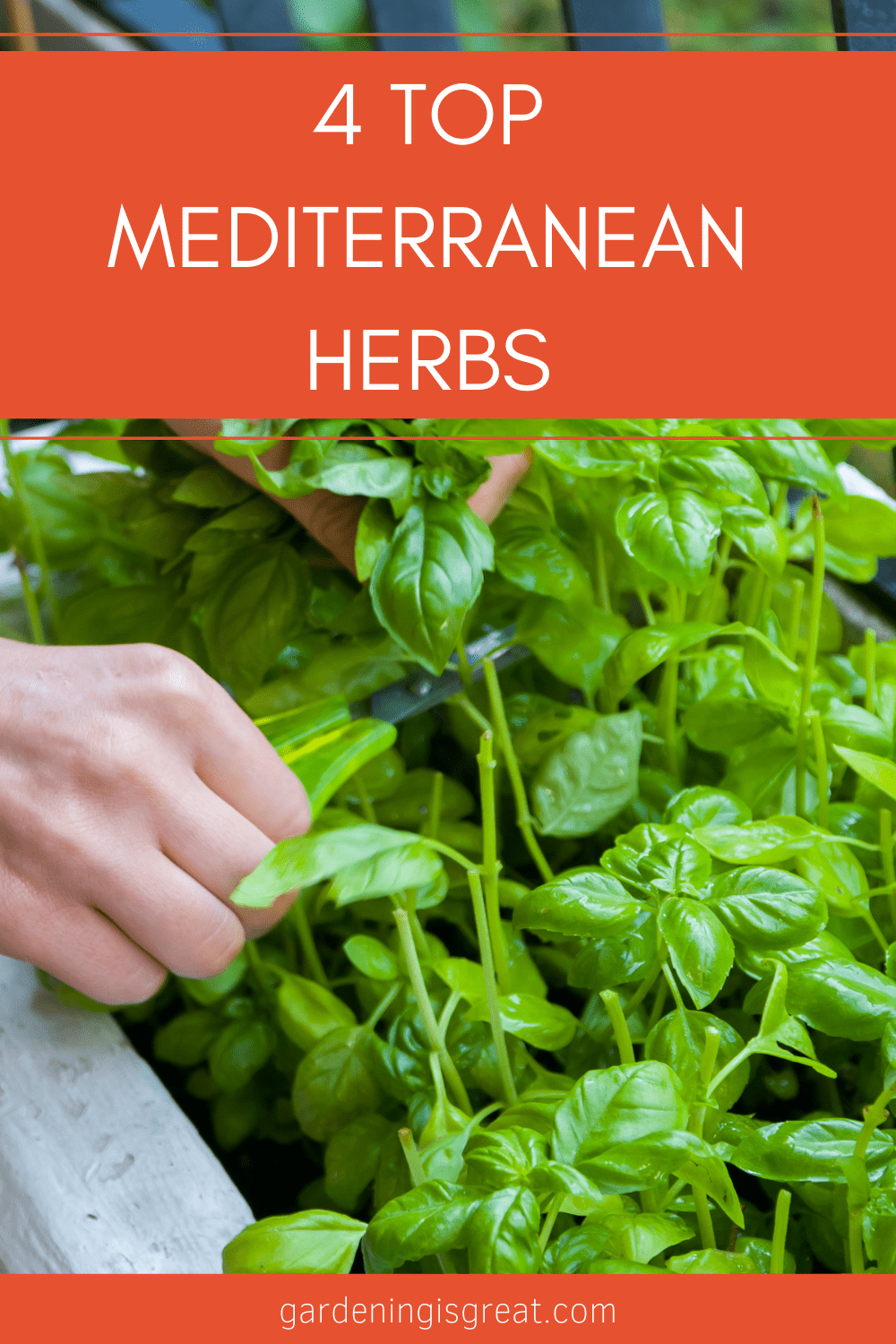
Sage
Sage is a herb that is part of the mint family with velveteen, almost fuzzy leaves. Due to its strong flavor, it is mostly used with meat or butter-based sauces.

How to Grow
There are numerous varieties of sage with some being annual and others perennial. It is worth considering whether you want to restart growing sage from seeds every year, or if you would like to use the same plant each year.
Sage grows best in well-drained soil positioned in full sunlight. You can plant the seeds in Spring inside growing trays. After about three weeks they will have germinated, at which point you can transfer the sage plants into larger pots.
This Mediterranean herb does not survive well too wet or too cold. With this in mind, it is a good idea to bring your sage plants indoors to protect them during the winter months.
You can prune your sage plants back after they have flowered to help encourage regrowth the following year.
How to Harvest
To harvest sage simply pick the leaves you want to use. They are best used fresh, however, if you want to dry sage too, you can pick a small bunch of the stems and hang them up to dry. Once they have, you can crush the leaves into an air-tight container.
Marjoram
Another herb from the mint family, marjoram grows with clusters of soft, green leaves. Marjoram has a woody flavor with a slight hint of citrus making it ideal to be used in salads, soups, and sauces.
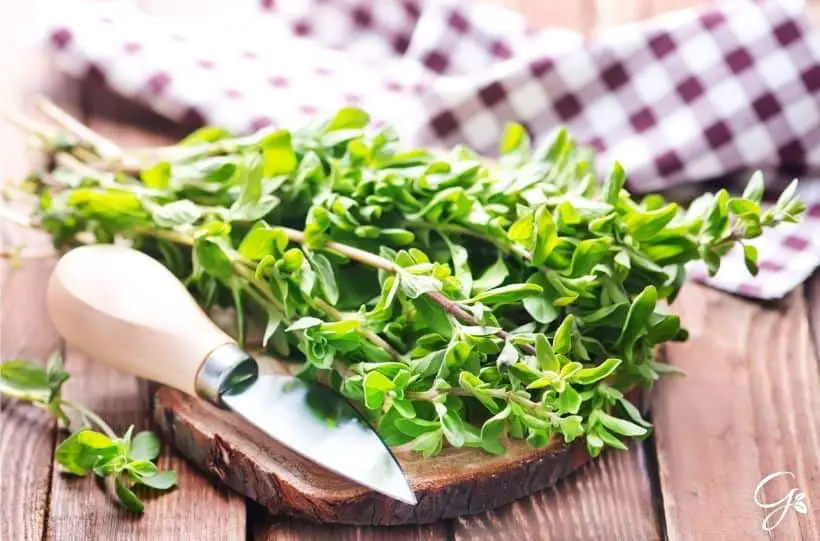
How to Grow
Marjoram can be sown from seed in February. The seeds are best started indoors to protect them from the cold weather before spring.
If transferring the seeds outdoors once they have germinated, choose a spot that is sunny and has well-drained soil. Alternatively, plant the seedlings in a larger pot so it is easy to bring them back inside during the winter months.
How to Harvest
Like all Mediterranean herbs, marjoram can be used fresh or dried. To harvest, simply cut off the sprigs you need and remove the leaves to use. For drying, cut off a larger amount of sprigs to be hung and dried.
Thyme
Thyme is a popular herb used all around the world for its strong, herbal flavor. The long stems support clusters of small, green herbs, which can be used fresh or dried. Thyme is most often used as a herb when cooking meat or fish.
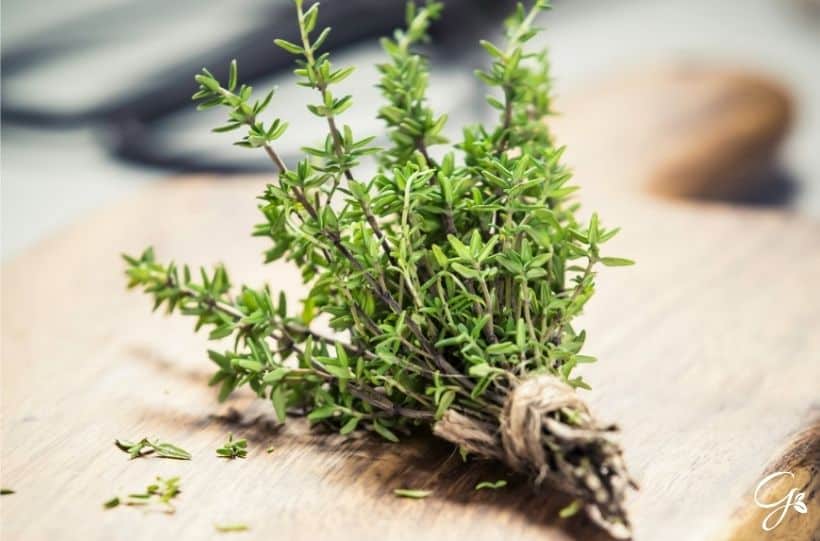
How to Grow
Thyme is a difficult herb to establish growing from seed so it is recommended to start from a young thyme plant instead. You can easily get a hold of a thyme plant from your local garden center.
You can then transfer the thyme plant into another pot with well-draining soil. Then place your thyme in full sunlight to help encourage the essential oils to reach the leaves.
Thyme is a herb that thrives in drought conditions so it is important to minimize the amount you water it.
How to Harvest
Thyme leaves taste best when picked just before flowering, however, as thyme is a perennial plant, it can be harvested all year.
You can remove a sprig of thyme as needed and then pull off the leaves to cook with. They are best fresh, however, the leaves can be stored in the refrigerator for up to three days.
If you would prefer to dry your thyme, you can pick a bunch of sprigs and hang them to dry. Once they are completely dry, remove the sprigs and store the leaves in an air-tight container.
Tarragon
Tarragon is a herb from the sunflower family with long, slender leaves that grow from a thin stem. This Mediterranean herb is often used to flavor meat, fish, and egg dishes due to its licorice flavor with a subtle sweet hint of vanilla.
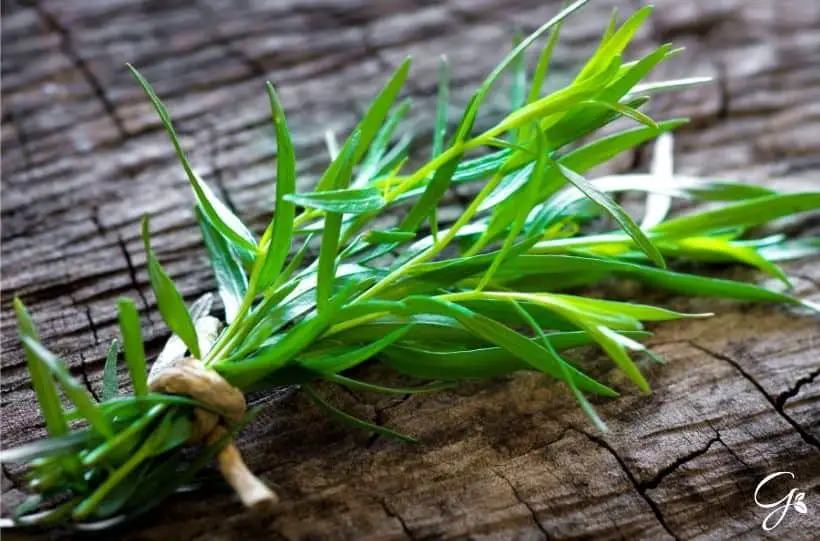
How to Grow
Tarragon is a perennial herb so will regrow every year. It thrives in a sunny area and is planted in soil with good drainage.
Depending upon the variety of tarragon you wish to grow will depend upon how you plant it at home. French tarragon does not seed and doesn’t flower often. So it is best to buy a seedling from your local garden center. As it grows, you can then transfer French tarragon into the soil in your garden or a larger pot.
Alternatively, Russian tarragon regularly seeds in April and May. Place the seeds in a growing tray on top of the compost. After they have germinated, they can be transferred outdoors or to larger pots.
If you are wanting easy access to use tarragon in the kitchen or fresh tarragon all year round, it is best to plant them in a pot that can be easily transferred indoors during the winter months.
How to Harvest
The leaves of tarragon are best harvested between May and October when they are at their prime. Younger leaves have a stronger flavor than the older ones, so it is ideal to use these if using fresh leaves.
To harvest, simply cut off the leaves that are required. If you want to use tarragon from your plant, it is ideal to harvest more during the summer months to dry ready to be used in the winter.
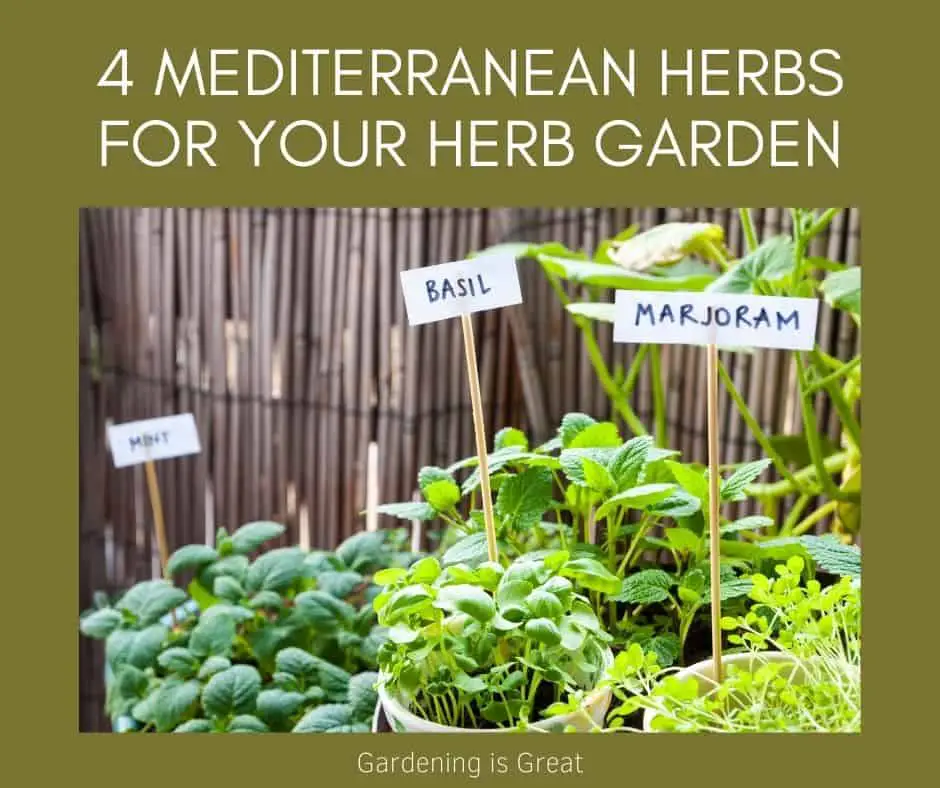
If you are looking for some of the best herbs to grow in your herb garden, these 4 Mediterranean herbs are a good choice.
Each herb listed offers varieties that can regrow each year and require little maintenance. Plus, they are ideal herbs to grow due to the flavors they can bring a range of homemade dishes.
Make sure to check out these additional posts for more ideas and top tips on growing herbs:
